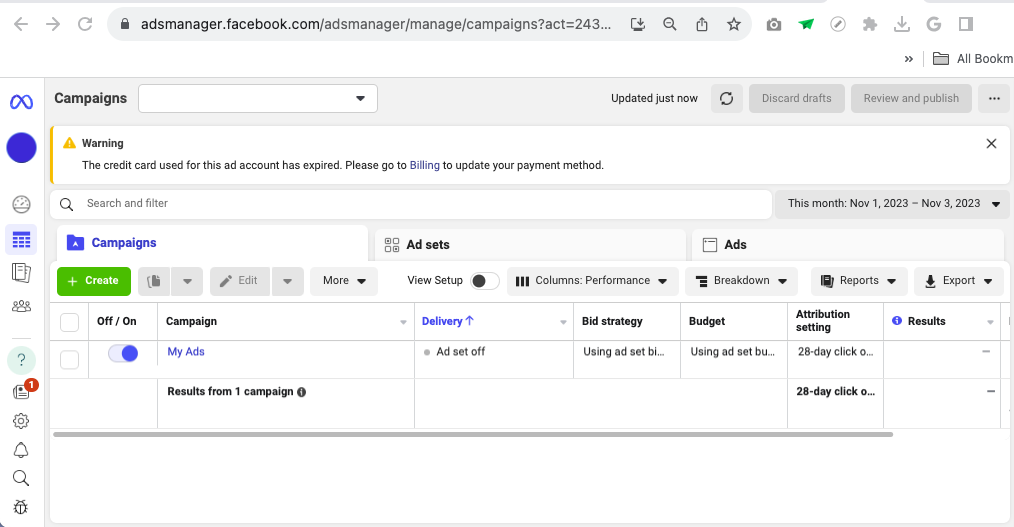In this comprehensive guide, we explore the world of healthcare advertising, why digital ads are crucial for medical practices, when to run ads, the best digital channels to use, and how to make the most of a limited budget.
What Is Healthcare Advertising?
Healthcare advertising includes a wide range of strategies and tactics used by medical practices to promote their services to potential patients. In an era where information is readily available online, effective healthcare advertising is a key part of attracting new patients and growing a practice.
Advertising in healthcare isn’t just about putting your name out there; it’s about crafting compelling messages that speak to your target audience. This involves understanding your unique value proposition (what makes you valuable or different), identifying your ideal patient, and creating messages that address their needs and concerns.

Pros and Cons of Medical Advertising
Digital marketing lets practices reach their desired audiences while offering cost-effective marketing solutions and real-time analytics. Like any strategy, though, it comes with a unique set of advantages and disadvantages.
Here are a few of the pros and cons of digital advertising.
Pros of Medical Practice Advertising
Targeted reach: Digital advertising lets medical practices reach a targeted audience based on demographics, interests, and behaviors. This precision helps them connect with potential patients who are more likely to benefit from and be attracted to the practice’s services.
Measurable results: Digital platforms give medical practices access to detailed analytics to track the performance of their ads in real-time. This data helps practices make data-driven decisions and optimize ad spend.
Flexibility: Digital advertising offers the flexibility to experiment with different ad formats, messages, and targeting options, so practices can refine their strategies for better results.
Cons of Medical Advertising
Competition: The digital space is competitive. And standing out among numerous medical practices can be challenging. It takes effort and investment to achieve a strong online presence.
Privacy concerns: Digital advertising relies on user data, which creates privacy concerns. Understanding and following data protection regulations is essential to comply with the law and patient trust.
Learning curve: Managing digital ad campaigns effectively has a learning curve. It may take time for medical practitioners or their teams to understand platforms, tools, and best practices.
Ad fatigue: Consumers frequent exposure to digital ads can lead to ad fatigue and result in potential patients ignoring or blocking ads. Medical practices want to carefully manage the frequency of their advertising to avoid this issue.
Ad blocking: Many users employ ad-blocking software, which reduces the reach of digital ads. This may require alternative strategies to reach and engage the practice’s target audience.
When to Run Advertising for Your Healthcare Practice
Timing is crucial in medical advertising. Ad campaigns should align with various factors to ensure they’re effective:
Patient demand: A practice wants to understand when patients are most actively seeking medical services. This can vary depending on the type of practice. For example, dental clinics might see increased demand during school vacation periods.
Seasonal trends: Practices want to consider healthcare services that are in higher demand during specific seasons. For example, flu vaccinations in the fall or allergy treatments in the spring. Tailoring ad campaigns to these healthcare trends yields better results.
By carefully timing ad campaigns, healthcare practices can ensure that messages reach potential patients when they’re most likely looking.
3 Best Digital Channels for Healthcare Ads
Three of the most effective digital channels for medical advertising are social media, Google Ads, and geofencing ads. These channels let medical practices spread the word about their services and are part of a multi-channel marketing approach.
Social Media
Social media platforms let providers engage with potential patients, share informative content, and run targeted ads. Here are the top three social media platforms for running ads.
Facebook: Advertising on Facebook lets practices tap into its vast user base and sophisticated targeting options. With precise demographic targeting, practices can reach specific age groups, interests, and even behaviors, ensuring your ads reach the right audience.
Instagram: Instagram is part of Facebook. It offers similar targeting capabilities and a visually-driven platform. Ideal for showcasing a medical practice’s aesthetics, Instagram appeals to a younger, visually oriented demographic.
TikTok: TikTok is known for its short-form video content It offers a unique opportunity to create engaging video ads that resonate with a younger demographic. It’s an excellent choice for practices to inject creativity and entertainment into their advertising strategies.
How to Set Up Ads on Social Media Platforms
Ads for Instagram and Facebook are done through Meta Ads. While TikTok uses a similar, but separate, platform.

To run ads:
- Create a Facebook Ads account and/or a TikTok Ads account.
- After clicking on the “create” button, choose your campaign goal, such as website visits, app installs, or video views.
- Specify your target audience based on demographics, interests, and behaviors.
- Organize your ad sets by defining budget, scheduling, and targeting options for each.
- Develop eye-catching creatives and short videos (15–60 seconds) that resonate with your target audience. Make sure you include a clear call to action (CTA) to encourage user engagement.
- Allocate your budget and choose when your ads will run.
- Review your campaign settings, confirm your budget, and launch your campaign.
Google Ads
Google is the go-to search engine for most people seeking medical information and services. Therefore, Google Ads is a powerful tool to reach patients actively searching for medical services. With Google Search Ads, you have the unique ability to position your medical practice at the forefront of search results when patients are actively seeking healthcare solutions
How to Set Up Ads on Google
- Create a Google Ads account.
- After clicking on the “create” button, choose your campaign goal. For healthcare advertising, common goals include “Website traffic” or “Leads.”
- Specify the geographic location where you want your ads to appear. This ensures your ads reach patients in your service area.
- Set your daily budget, which determines how much you’re willing to spend on your campaign.
- Organize your ads into ad groups. Each ad group should focus on a specific medical service or keyword theme. Choose relevant keywords related to your medical practice. Use Google’s Keyword Planner to find keywords with search volume and relevance.
- Craft concise and compelling ad headlines and descriptions. Highlight the unique value your medical practice offers.
- Enhance your ads with extensions, such as site link, callout, and location. These provide additional information and encourage clicks.
- Set when your ads will appear. You can schedule ads to run at specific times or all day.
- Review your campaign settings, budgets, and ad groups to ensure accuracy.
- Once you’re satisfied, click “Launch Campaign” to make yourGoogle Ads live.
Geofencing Ads
Geofencing ads offer hyper-local and precise targeting by defining specific geographic areas, making them a valuable tool for healthcare providers. These ads increase local relevance by engaging potential patients near your clinic. They foster a competitive advantage by targeting your competitors’ locations. And they trigger in real-time when individuals enter or leave the designated area, capturing immediate interest.
Agility Ads and Fluid Ads are two of the many platforms that offer geofencing ads.
While the process of setting up ads on geofencing platforms follows a familiar pattern, it’s important to note that each platform has its own distinct elements, making it challenging to provide a one-size-fits-all guide. For specific instructions tailored to each platform,visit their respective websites, where you can find detailed guidelines and tutorials.
How to Run Ads for Medical Practice with a Limited Budget
Small clinics and providers with limited budgets can still make a significant impact through effective budget management and strategic decision-making. Here are some key strategies to consider.
Budget control: Establishing a well-defined budget is a critical aspect of an advertising strategy, serving as a financial safeguard to prevent overspending. This fundamental step ensures that a practice allocates resources effectively to achieve its goals without breaking the bank.
Most digital advertising platforms offer a user-friendly budgeting system, letting the user set precise daily or monthly limits. This level of control empowers practices to manage advertising expenses within their financial constraints.
ROI calculation: To make the most of a limited budget, practices want to regularly evaluate the return on investment (ROI) of ad campaigns. Calculate the cost per acquisition (CPA) to determine how much is spent to acquire each new patient. Here is a formula to help calculate ROI:
ROI = (Net Profit / Cost of Investment) * 100
For example:
Suppose a practice invests $1,000 in an advertising campaign and generates revenue of $2,500.
To calculate ROI:
ROI = (2,500 – 1,000) / 1,000 * 100 = 150%
In this example, the ROI is 150%, which means for every $1 invested, the practice got $2.50 in return. This positive ROI shows that the campaign is profitable, making it a valuable marketing investment. If certain campaigns aren’t delivering a positive ROI, practices can reallocate budget to more effective channels.
Testing and optimization: An advantage of digital marketing is the ability to continuously test and optimize. Users have the freedom to experiment, fine-tune, and enhance campaigns for optimal results.
This process begins with crafting compelling ad creatives, honing persuasive messaging, and strategically selecting target audiences. A/B testing is a valuable tool in your arsenal and lets you systematically compare the performance of different ad variations.
Email list integration: A practice’s budget may be limited, but the potential for audience growth isn’t. Practices can use advertising campaigns to encourage website visitors to join their email list. With a healthcare email marketing, practices have a direct communication channel to provide patients with regular updates, health tips, and special offers.
Conclusion
Healthcare advertising is a vital tool for medical practices looking to grow their patient base. With the right digital advertising strategies, even clinics with limited budgets can thrive in today’s competitive healthcare landscape.
If your practice is ready to take your healthcare practice to the next level, explore Kiwi Health, an all-in-one patient growth solution, to streamline your efforts and achieve remarkable results.

Leave a Reply